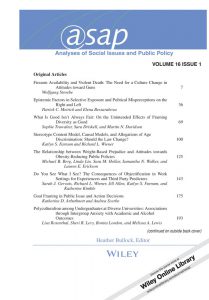Does your life pass the Bechdel Test?
The Bechdel test is a simple but effective way of assessing the feminist qualities of a film, and how women are represented. The test was introduced by Alison Bechdel in 1985, in a comic strip called ‘The Rule’. The test asks three simple questions of a film: 1) Are there more than two (named) female characters in the film? 2) Do they interact with each other? 3) If they do, do they talk about something other than a man? If...





